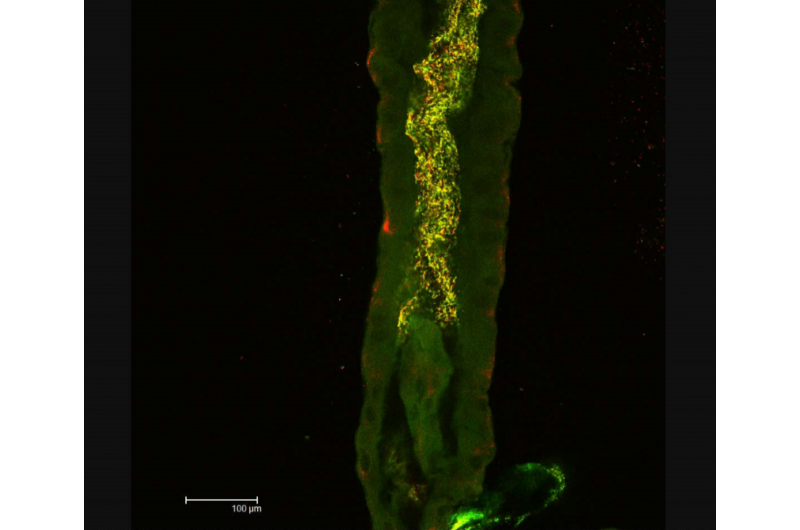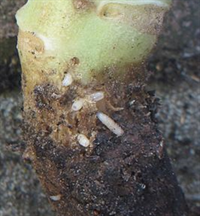Gut bacteria make cabbage poison harmless

The cabbage family contains rather toxic compounds. Greenfly, caterpillars and cabbage fly larvae attack cabbages and rapeseed ferociously nonetheless. How can that be? The secret lies in their gut, at least for the cabbage fly. Its gut bacteria deliver a special service to their host: they produce enzymes that degrade the toxic compound into harmless pieces.
The cabbage fly is a small animal with a big impact. Its larvae infest the roots of cabbage plants, and their family members like rapeseed. Up to fifty percent of yield loss has been reported. With two to three generations a year cabbage fly is a pest to fear. It is an enigma how these animals can withstand the enormous amount of toxins cabbage plants produce.
A complete ecosystem
'As microbiologists we wondered if the gut bacteria had something to do with it,' says Cornelia Welte from Radboud University in the Netherlands. 'In a metagenomics analysis we found a gene coding for an enzyme that performed a special trick: it degrades isothiocyanates, cabbage toxins, into harmless pieces. We isolated the enzyme and put it in a test-tube with isothiocyanates - and they disappear...
Ecosystem services
'We knew that gut bacteria have a beneficial role for their hosts like cellulose cracking, fighting pathogens, or making nutrients available, but this is only the second example of detoxification ever to be found in an insect. The coffee berry borer beetle has a bacterium that breaks down caffeine.

We think this finding can help to take a new angle on pesticides. If we find something to block the enzyme, cabbage fly might not survice the cabbage toxins any more.
New World
Insects are very interesting for microbiologists, Welte explains. 'Huge differences are to be expected. Some insects have oxic guts, some are anoxic, so you'll find completely different microbiota for that reason alone. Plus the fact that a lot of insects are specialist feeders. New techniques open up this world very quickly. Exciting times!'
More information: SaxA-mediated isothiocyanate metabolism in phytopathogenic Pectobacteria. Appl Environ Microbiol. 2016 Feb 12. pii: AEM.04054-15. [Epub ahead of print]
Cornelia U. Welte et al. Plasmids from the gut microbiome of cabbage root fly larvae encode SaxA that catalyses the conversion of the plant toxin 2-phenylethyl isothiocyanate, Environmental Microbiology (2015). DOI: 10.1111/1462-2920.12997
Journal information: Environmental Microbiology
Provided by Radboud University


















